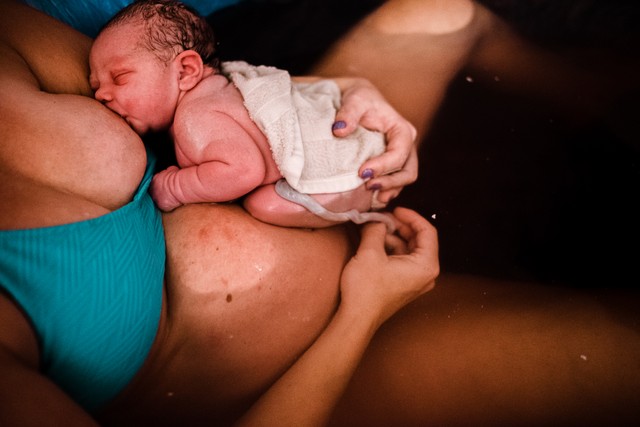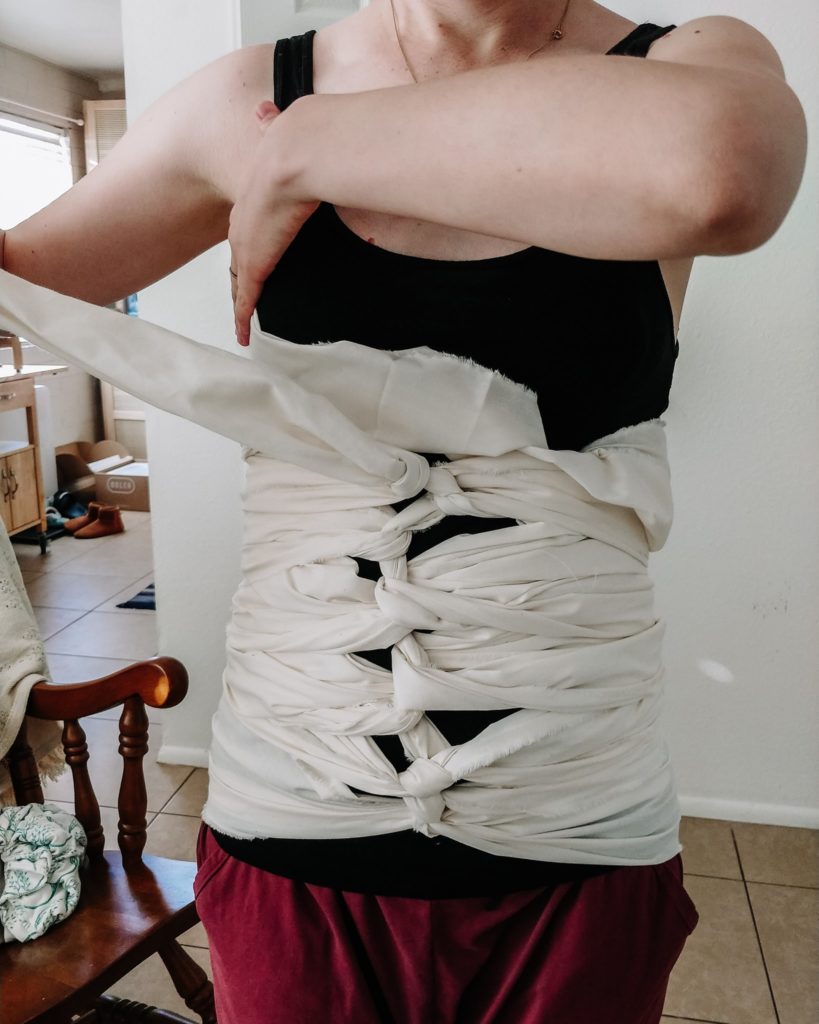Healing Your Uterus After Birth

You’ve had a baby. You’re having a baby! (Or babies.) Welcome to a season in life when everything shifts, including how you care for your precious body. In this article, we will speak specifically to the aftercare of your uterus in postpartum, how your uterus works, and what to expect and plan for – including support.

Getting to Know Your Uterus
When mothers and birthing persons are pregnant, the uterus is the organ responsible for both holding baby or babies and expelling babe when the time has come for them to arrive. A sacred container for a new human to come Earth side, the uterus often isn’t thought of much by many womb-bearers until it is absolutely necessary – when it’s impossible to ignore: when Braxton Hicks, true labor, or delivery of the placenta occur.

Yet, it’s of the utmost importance for folks to understand their womb.
For example, each of these rhythmic movements of the uterus has a specific purpose. Prodromal labor, also known as Braxton Hicks contractions happen sporadically, are irregular in duration, frequency, and intensity, and cause discomfort – though usually not enough for you to call your midwife or obstetrician. We often consider these “practice” for the real deal. True labor is typically contractions at regular intervals. As these contractions become stronger, the time between them decreases, and your cervix begins to dilate. During this time, baby begins their descent. And last but not least, delivery of the placenta occurs after that of your babe. You can learn more about the placenta here.
Your Uterus After Birth
After birth, your uterine wall must heal (from the placenta detaching) and your uterus must return to it’s original size. Postpartum contractions shrink your uterus so that it once again fits securely within the pelvic bowl, it’s home and safe space. This process is called uterine involution. Though rarely spoken about, postpartum cramps or afterpain are a sign that your uterus is doing exactly what it’s meant to do! These cramps last for about six weeks and may come with lochia or discharge as the uterus heals.
Speaking of vaginal bleeding,
“You will have vaginal bleeding after you’ve given birth. This bleeding is known as lochia. The lochia is a combination of mucus, tissue and blood that your womb sheds as it replaces its lining after you’ve given birth. Bleeding often lasts for around for four to six weeks, but could last up to 12 weeks after your baby’s born. If you’re worried, you can talk to a health professional. Bleeding will start off heavy and red to brownish red. It will become lighter in color and flow over time.”
– NCT, the national charity for pregnancy, birth and early parenthood UK
While postpartum contractions support your uterus in managing the potential of complications, including postpartum hemorrhage, there can still be warning signs that your body isn’t healing as it should after the 24 hour mark. It’s important to discuss any clots with your doula and/or midwife. Large clots or a series of large clots, bleeding that increases, and discharge that is foul in odor are all reasons to speak with a professional. If you’re concerned, your provider is too!
Uterine Healing
With doula care, we work to prevent many of the challenges we’ve mentioned that may take place in uterine healing. In fact, postpartum doulas have a plethora of tools, tips, and tricks to keep your body and mind at it’s best – much of it specifically utilizing timeless practices for you and your uterus as it heals.

Bengkung belly binding (shown above) is just one of the ways your postpartum doula can honor this season and space. Traditional Ayurvedic postpartum doulas and practitioners advise that giving birth creates space in the womb (in Chinese medicine, it’s looked at as “cold”) that needs to be warmed and nourished. Belly binding not only provides this, but also the comfort and grounding postpartum mothers and birthers need most.
Other ways your doula may care for you which in turn support your uterus or womb include:
- Physical Support – reducing the amount of time you are on your feet for the first 42 days postpartum by making meals, caring for siblings, and light housework (like loading and unloading the dishwasher, and mother/babe laundry)
- Emotional Support – addressing the emotional needs of the family, including birthing person and partner by being a safe space to talk about and process birth and postpartum; as a note, your doula has first hand experiencing in witnessing how “the body keeps the score,” your physical healing is very much impacted by your emotional and mental well-being – in turn, some postpartum doulas are even able to bring womb healing and closing ceremonies to you – honoring the journey you and your womb have been through (you can learn more about these here)
- Structural Support – honoring your physical body by noticing how you sit and/or lay in bed, and providing suggestions as well as tangible structural supports; your pelvic bowl is a fragile space post birth and whether you choose binding (above) or simply to make sure your body is in alignment as you heal (think pillows in all the right places – like behind your low back and under your knees while you feed), it matters
- Herbal Support – offering suggestions of herbs and spices can aid in uterine healing. In Ayurvedic medicine, the foundation for our postpartum care, there are a myriad of simple supports we like to use with our clients including warming spices, dashamula (10-root tea), shatavari, and ashwagandha; consulting with your doula, midwife or Ayurvedic practitioner can help you choose which herbs are right for you
In conclusion, we want you to know that uterine healing takes time and intention. It takes community support. And, it is worth the energy expended to make sure you not only understand how your uterus functions but why certain experiences take place – whether you are planning for more babies, or not.
As always, if you have questions about postpartum healing please feel free to reach out.
Your Cherry Blossom Doulas
Please note, this article is provided for educational and informational purposes only and does not constitute providing medical advice or professional services. The information provided should not be used for diagnosing or treating a health problem or disease, and those seeking personal medical advice should consult with a licensed midwife or physician.

Hi! I’m Alyssa Leon. I lead Cherry Blossom Doula Services, LLC – an inclusive birth + postpartum doula team in Arizona; and mentor doulas in Arizona and beyond.